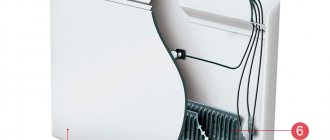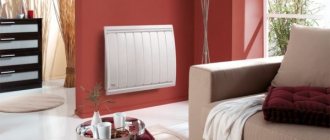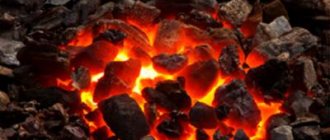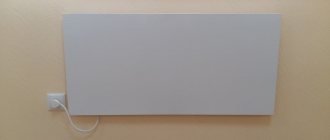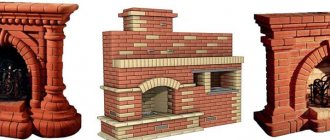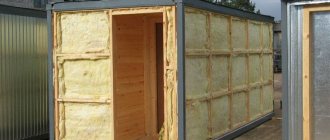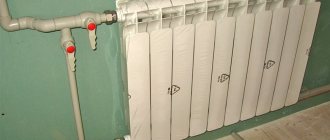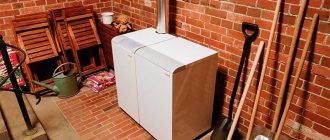How does infrared heating work?
Infrared systems contain infrared emitters
, heating the object to high temperatures. The final temperature of the part is determined by the time it is kept in the infrared oven. The transfer of IR energy increases as the difference between the temperature of the heater and the temperature of the heated part increases.
Infrared or IR energy consists of electromagnetic waves
, which transfer energy directly to the product at the speed of light. At high oven ambient temperatures, little energy is dissipated into the humidity of the air inside, and this loss has little effect on system performance. If energy is reflected or does not enter the product, it is not lost. Instead, the infrared rays are reflected from the interior walls of the oven, which may have a reflective surface, or re-radiated onto the product from an opposing heater.
All organic materials, such as paints, powders, plastics, films, fabrics and papers, have unique electromagnetic absorption spectra, which, like fingerprints, are characteristics specific to the composition of the material. Absorption spectra are usually based on a specific material thickness and will show maximum and minimum wavelengths. That is, areas where the material absorbs infrared energy, areas where the material transmits infrared radiation through the material, and areas with partial absorption.
Based on this knowledge, the heater wavelength effective to heat the surface or entire thickness can be selected for each material.
Absorption
Infrared radiation can be reflected, absorbed and conducted. There is a simple arithmetic relationship between these 3 stages that adds up to 1 or 100%. 1 or 100% is otherwise called an absolute black body. A completely black body is a physical body that, at any temperature, absorbs all electromagnetic radiation incident on it in all ranges. Thus, an absolutely black body has an absorptivity of 1 for radiation of all frequencies, propagation directions and polarizations.
Radiation = Reflection + Absorption + Transmission.
Determine when to use infrared and when to use convection heating
Convection ovens
- the easiest way to reheat the product. With convection, whether in an electric or gas system, energy is transferred to the product by first heating the air, which then transfers the energy to the material.
Electrical systems typically use open nichrome coils, dry ceramic heating elements, or metal-clad air heating elements. Direct combustion gas systems use a flame to directly heat the air. Indirect combustion gas systems use a heat exchanger to separate process air from combustion air.
To understand the difference between convection heating and infrared heating, consider the following example: you are sitting in front of a closed window before sunrise, and the room is cool. You turn on the heating in the room and the room temperature gradually increases to your comfortable level. When the sun begins to shine through the window, it immediately becomes warm, although the air temperature in the room has not changed. The sun gives you infrared energy faster than the air in the room removes it. Infrared energy can be transferred directly to the product at a much faster rate than convection.
In a convection oven, the product spends a significant portion of its total residence time just before reaching the process temperature. This is the main part of the energy consumed.
Infrared heats the material to temperature faster than a convection oven due to the higher rate of energy transfer, and also produces heat with greater efficiency.
In a convection oven with a typical dwell time of 20 to 30 minutes, it may take 15 to 20 minutes to bring the parts up to temperature; an infrared oven can reduce the time to 1-3 minutes. This is because infrared radiation is a direct form of energy transfer that does not rely on conduction through a medium such as air. Other benefits include reduced conveyor length, fewer fixtures and floor space savings. The overall goal is to reduce unit processing costs.
Terms used to measure heat
Heat is a type of energy that is measured in Joules (J) or BTU (British Thermal Unit) . The joule is a unit of measurement used in thermodynamics. BTU is more commonly used even in the US, despite its name. Calories are very rarely used in thermodynamics. Heating power is measured in Watts (W) and is calculated as 1J/sec. Heat flux (Φq) is calculated as a unit of power per unit area and is measured in W/m² or W/cm² .
Although temperature can be measured in a variety of units, the most commonly used in industry is degrees Celsius (°C) . However, Kelvin (K) is used for scientific purposes as it helps make more accurate measurements, while Fahrenheit (°F) is mainly used in the USA.
Check infrared compatibility of parts
The goal is to determine whether a system designed using infrared radiation will have advantages over a convection system.
Difficulties with infrared heating
may occur if:
- Assembled parts made from multiple materials.
- Materials of different densities.
- Poorly conductive heat products with hidden areas of complex shape.
Infrared heating will be effective
in cases where:
- The material will conduct heat quickly (like most metals).
- A part, if it has hidden areas, can be rotated.
- Parts are hung on an overhead conveyor in only one row (not double folded if parts of the part are shielded from infrared energy), or the parts are low profile structures, flat panels, or continuous webs.
To compensate for parts that are not ideal candidates for infrared radiation, combined infrared/convection systems are often developed. The higher the proportion of process energy provided by convection, the lower the overall efficiency of the oven will be. At some point, the benefits of a combined infrared/convection system are no longer economical and a traditional convection system must be used.
Ceiling, wall or maybe floor?
And the main “headache” is – is a ceiling, wall or floor infrared heater right for you? The most popular type of mounting is ceiling. It deservedly leads due to three factors: it does not take up additional space, has the widest range of action and is available in a large number of options. One of the disadvantages is that you need an accurate calculation of power, taking into account the height of the ceiling, the area of the room and the level of thermal insulation. A wall-mounted infrared heater outperforms a ceiling-mounted one when it is necessary to heat only a certain area, for example a sofa in the living room, on which the family can comfortably watch TV. And wall film panels will also serve as an exclusive decorative element. The invariable leader in mobility is the floor-mounted infrared heater. It can be moved from room to room if necessary, or even taken to the country house for additional heating on weekends. And some film panels can even be hidden under the carpet.
Understand the difference between short-wave, mid- and long-wave infrared radiation
Infrared heaters are available that emit in the short-wave, mid- and long-wave regions of the infrared spectrum. The most efficient type of heater for a particular process is determined by the actual process and product needs. This refers to the electromagnetic absorption spectra of the product being heated and how much energy is required for the process.
Shortwave Heaters
Short-wave or high-intensity heaters
emit energy in the wavelength range less than 2 microns. Because short-wave heaters can radiate some of their energy in the visible light region, the process can be sensitive to different colored coatings and may require different oven settings for each. Shortwave energy tends to penetrate thin organic coatings.
Short wave heaters are typically quartz tungsten halogen lamps and typically use reflectors or refractories to direct some of the energy produced to the product. The expected heater life is approximately 5000 hours when operating at rated power.
Medium wave heaters
Medium wave heaters
or medium intensity emit in the wavelength range from 2 to 4 microns. Medium wave heaters are available in many configurations, including tubular quartz heaters, standard QP quartz panels, carbon IR emitters, and custom quartz panels.
Medium wavelength infrared radiation tends to be directly absorbed by organic coatings. Peak water absorption falls in this mode, making it suitable for efficiently heating foods with high moisture content or water-based coatings. Some heater designs have built-in reflective devices to reduce maintenance costs. Life expectancy can exceed 30,000 hours.
Long wave heaters
Long wave or low intensity heaters
emit in an area greater than 4 microns. At the lowest energy levels, long wave heaters approach the lower efficiency of a convection oven.
Ceramic infrared heaters are classified as medium and long wave radiation, as they can have a wavelength from 2 to 10 microns depending on the power.
IR heater design
The design of IR heaters is quite simple. The heating wire or filament is placed in a housing, which, depending on the requirements for the heater, can have a different shape and appearance. A special reflector and terminal elements for connecting to the network are placed inside the housing base. A terminal is located outside the housing through which the external leads pass.
This heater design is very similar to floodlights for halogen lamps, which are used to illuminate facades, advertising, courtyards, etc. These elements are used for local lighting of a small area. With their help, you can easily maintain the temperature of individual areas without incurring energy costs for heating the entire area.
Spot IR heating
Implies thermal impact by directed heat flow. In restaurants, such elements are used to heat local areas at individual tables. They are installed like lamps, screwed to the ceiling.
Full heating
These heaters are manufactured in various versions, because... are in great demand. They can heat large areas: industrial workshops, warehouses, offices, living rooms, restaurant halls, etc. The design of the hollow heater includes a carbon lamp.
Design an Infrared Compatible Conveyor System
Infrared radiation, like light, transfers energy to what it sees. Inside an infrared oven, energy that is not directly absorbed by the product will be reflected or re-emitted (usually at a lower wavelength) within the oven body, providing many opportunities for the product to absorb energy. The material from which the product is made may help transfer the energy received from the infrared heater to hidden areas on the product. This applies to metal products with high conductivity.
When using an infrared system, the most effective representation of a part occurs in one dimension. If the coating is on one side, the infrared can be placed on the coated side or on both sides to reduce overall oven residence time. For 3D parts, rotating the part in the oven often improves heating uniformity of the product.
Infrared radiation does not provide maximum effectiveness:
- when the parts are large and complex in shape;
- when they are transported in several parts along the width of the conveyor;
- when they are hung on a stand where one part can be blocked or hidden from infrared energy by another part.
Unless you rely on heat conduction from exposed areas or hot air assistance, the product should have close to "line of sight" infrared energy.
Quartz emitters
This type of emitters acts with heat on surrounding surfaces without wasting energy in the air space. The beams are delivered in the medium wavelength range. A high-resistance coil located inside the quartz tube allows the heater to quickly reach the specified operating mode and quickly drop the temperature. Due to this, with cyclic methods of processing products at high temperatures, it is possible to significantly save electricity. Often, quartz tubes are installed in vacuum and thermal forming equipment, IR dryers and heat shrink machines. The terminals for connection to the network are located at both ends of the tube. The connection can be made with bolts or heat-resistant wires. The manufacturer can apply ceramic beads to the wires for thermal protection. This does not affect the flexibility of the outputs. To focus the beams and direct them in the right direction, quartz tubes can be enclosed in a steel reflector.
Process temperature control
Process control without feedback
- This is when the infrared radiation source, gas or electric, is set to a percentage of full power. This is similar to a regular electric or gas cooker where you have low, medium or high settings. The control system does not receive information about the actual temperature of the heater or product.
In process control with feedback
a measuring device such as a thermocouple is used. Closed-loop control systems can automatically compensate for changes in ambient temperature, changes in inlet product temperature, and fluctuations in line voltages in electrical systems.
For non-critical processes, where the acceptable product temperature may range from 14 to 28 o C, open loop control is more cost effective and can provide sufficient product control and process repeatability. Where tight temperature control is required, for example less than 5 ø C, closed loop control is the preferred choice.
Combined systems can be used where the first part of the process is open-loop controlled to raise the product to a common temperature range, and the last part of the system is closed-loop, providing the desired final temperature tolerance and repeatability for the entire process.
Installation features
The installation procedure for infrared heating panels is not complicated: just follow the instructions in the instructions. It can be found on the website of the manufacturer of the purchased equipment. After completing the installation work, you only need to plug in the device into the electrical network.
IR heaters are mounted on walls and ceilings. When choosing a ceiling device, you should consider the following recommendations:
- It is important to prepare suitable fasteners: they must be strong in order to reliably hold the weight of the device being installed.
- The heater is fixed using the fasteners that come with it. Often these are steel chains and rigid brackets.
- During the installation process, it is necessary to prevent contact of the heating surface with flammable substances and materials.
- Using a special tape, it is important to insulate the electrical wiring contacts.
Use infrared heating to upgrade and replace systems
If your company has a convection oven or even an existing infrared oven that is not performing properly to meet your production goals, consider upgrading the system.
If the existing furnace is in good condition and there is room in the line to add an infrared pre- or post-heat system, a booster system may provide the best return on investment.
A common application is an infrared preheat system on a powder coating line. The infrared radiation will provide the energy to melt the powder. The actual operating costs of each part can be reduced because the energy consumed by the convection oven will be reduced to the energy needed just to maintain the temperature of the part. Product quality can improve because with a booster system the product can withstand temperature longer for better flow.
The Polymernagrev company produces infrared heaters of various types
: ceramic, quartz, halogen lamps, carbon, as well as ready-made infrared equipment such as powder coating polymerization ovens, molding tables, infrared panels, tunnel drying and much more.
What is the real danger?
One of the most likely harmful effects of ICO is drying out the skin. The surface of the skin, being exposed to an infrared source, heats up and moisture evaporates from its surface. But since the subcutaneous layers do not have time to warm up, the body does not produce sweat. Because of this, the skin “dries out” and sometimes burns occur.
Image gallery
Photo from
The real danger of gas appliances
Gas lantern-heater in the country
Outdoor version of gas equipment
Installing a gas heater in the house
If you believe consumer reviews about infrared units, the “baking” effect during their operation is quite common, and the skin especially suffers in infrared saunas. The effect of intense infrared radiation on people has been studied for a long time - both by physiotherapists and specialists in charge of occupational safety issues.
With prolonged or insufficient exposure, infrared rays are considered a highly harmful factor. In physiotherapy, the effect of using radiant heat is considered beneficial in strictly regulated “portions” and a short duration of irradiation.
The permissible intensity of infrared irradiation of the surface of the human body (during a long stay in a room with an IR source) is regulated by SanPiN 2.2.4.548-96
IR heaters also pose a danger to the eyes - thermal damage to the lens and retina can provoke the development of cataracts, as well as contribute to the progression of existing problems with the organs of vision.
Infrared rays directed directly at the head cause migraines, nausea, and deterioration in general well-being. Such complaints from owners of ceiling radiators are especially frequent.
Whether an infrared heater will cause real harm depends in each specific case on the following points:
- The length of the waves emitted by the equipment . Long heat waves are most beneficial for the human body; short ones, penetrating through the skin and even the bones of the skull, do not act in the best way;
- Radiation intensity. The body reacts positively to infrared rays with an intensity of up to 100 W/m2: the activity of biochemical processes increases, vigor appears, and appetite improves. But radiation intensity above 150 W/m2 can be dangerous: it suppresses the immune system and leads to irreversible cell damage;
- Individual sensitivity. Some people respond well to exposure to infrared rays, while others immediately feel worse. You should always listen to your feelings.
It is also worth remembering that there are a number of diseases for which infrared heating is contraindicated regardless of wishes (tumors, cardiovascular diseases).
